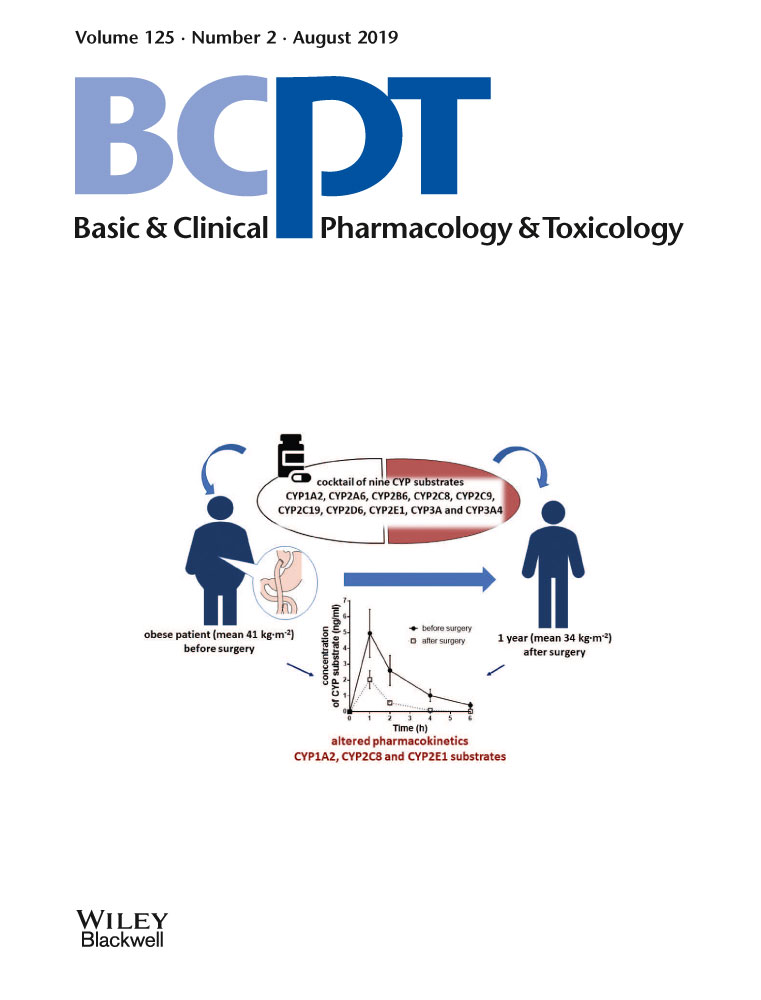Laparoscopic Roux-en-Y gastric bypass surgery influenced pharmacokinetics of several drugs given as a cocktail with the highest impact observed for CYP1A2, CYP2C8 and CYP2E1 substrates
Abstract
There is a lack of information about the changes in drug pharmacokinetics and cytochrome P450 (CYP) metabolism after bariatric surgery. Here, we investigated the effects of laparoscopic Roux-en-Y gastric bypass (LRYGB) surgery on pharmacokinetics of nine drugs given simultaneously which may reveal changes in the activities of the main CYPs. Eight obese subjects undergoing LRYGB received an oral cocktail containing nine drugs, substrates of various CYPs: melatonin (CYP1A2), nicotine (CYP2A6), bupropion (CYP2B6), repaglinide (CYP2C8), losartan (CYP2C9), omeprazole (CYP2C19/CYP3A4), dextromethorphan (CYP2D6), chlorzoxazone (CYP2E1) and midazolam (CYP3A). The 6-hours pharmacokinetic profiles in serum and urine of each drug or corresponding metabolite as well as their metabolic ratios were compared before surgery with those at a median 1 year later. LRYGB exerted variable effects on the pharmacokinetics of these drugs. The geometric mean AUC0-6 (90% confidence interval) of melatonin, bupropion, repaglinide, chlorzoxazone and midazolam after LRYGB was 27 (19%-41%), 54 (43%-67%), 44 (29%-66%), 160 (129%-197%) and 74 (62%-90%) of the pre-surgery values, respectively. The pharmacokinetics of losartan, omeprazole and dextromethorphan did not change in response to surgery. Nicotine was not detected in serum, while geometric mean of AUC0-6 of its metabolite, cotinine, increased by 1.7 times after surgery. There were 3.6- and 1.3-fold increases in the AUC ratios of 6-hydroxymelatonin/melatonin and hydroxybupropion/bupropion, respectively. The cocktail revealed multiple pharmacokinetic changes occurring after LRYGB with the greatest effects observed for CYP1A2, CYP2C8 and CYP2E1 substrates. Future studies should be focused on CYP1A2, CYP2A6, CYP2C8 and CYP2B6 to clarify the changes in activities of these enzymes after LRYGB.
CONFLICT OF INTEREST
The authors declare that they have no conflict of interest.




